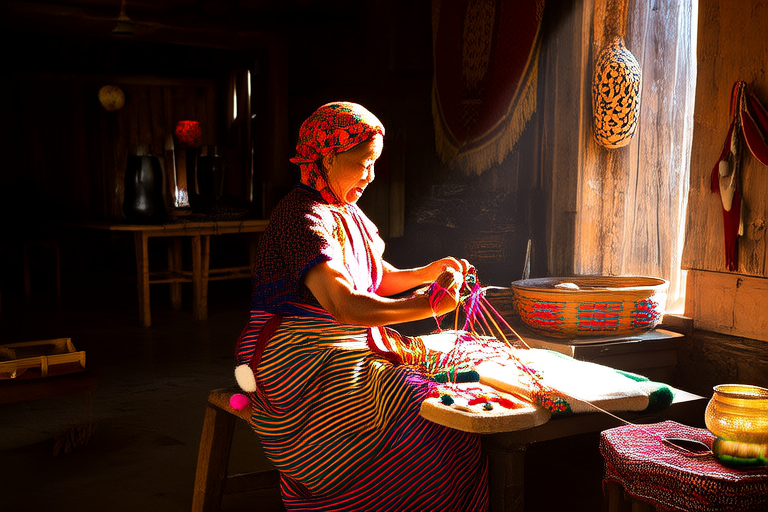Colorful Traditions: Decoding Unique Customs from Around the Globe

Colorful Traditions: Decoding Unique Customs from Around the Globe
The world is a tapestry woven from the threads of countless cultures, each with its own unique customs and traditions. These practices not only define the identity of communities but also serve as windows into the past, offering glimpses of ancient beliefs and lifestyles. Understanding and preserving these traditions are crucial for fostering global unity and enriching our collective human experience. In this article, we will explore a variety of colorful and unique customs from around the globe, shedding light on their origins, significance, and contemporary celebrations.
La Tomatina (Spain)
One of the most vibrant and chaotic festivals is La Tomatina, which takes place annually in the small town of Buñol, Spain. This tomato-throwing festival has its roots in the mid-20th century, though the exact origin remains somewhat mysterious. Some say it began as a spontaneous food fight during a local parade, while others attribute it to a protest against city officials. Regardless of its beginnings, La Tomatina has evolved into a beloved annual event that attracts thousands of visitors from all over the world. On the day of the festival, participants gather in the town square, armed with tomatoes, and engage in a massive, joyous food fight. The event culminates in a sea of red, as tons of tomatoes are thrown and squashed underfoot. For locals and tourists alike, La Tomatina represents more than just a fun day of play; it symbolizes the spirit of community and the joy of shared experiences.
Holi (India)
Known as the Festival of Colors, Holi is one of the most popular and widely celebrated Hindu festivals in India. It marks the arrival of spring and celebrates the triumph of good over evil. The festival is named after the demon king Hiranyakashipu, who was defeated by his son Prahlada, an ardent devotee of Lord Vishnu. During Holi, people gather in streets and parks to celebrate by throwing colored powders and water at each other. The colors symbolize the coming of spring and the renewal of life. Holi is also a time for forgiveness and reconciliation, as people come together to forgive past grievances and strengthen communal bonds. In addition to the color-throwing, there are musical performances, traditional dances, and feasts. The festival brings communities together, transcending social barriers and creating a sense of unity and joy.
Songkran (Thailand)
Songkran, the Thai New Year, is a four-day celebration that falls in mid-April each year. This festival marks the beginning of the solar new year and is characterized by the water-throwing ritual. People splash water on each other, believing that it washes away bad luck and brings good fortune. The custom is rooted in the belief that the water symbolizes purification and the washing away of sins. Songkran is also a time for families to come together and pay respects to elders, who are often sprinkled with water as a sign of respect. Traditional merit-making activities include visiting temples and offering alms to monks. The festival is a joyful occasion, filled with parades, music, and dancing. Despite its playful nature, Songkran holds deep cultural and spiritual significance, reminding Thais of the importance of family, respect, and renewal.
Day of the Dead (Mexico)
The Day of the Dead, or Día de los Muertos, is a Mexican holiday that honors deceased loved ones. Unlike Halloween, which focuses on fear and ghosts, the Day of the Dead is a vibrant and joyful celebration of life. Families construct altars adorned with flowers, candles, photographs, and favorite foods of the departed. These offerings are believed to guide the spirits back to the world of the living for a brief visit. Parades, processions, and masquerade balls are common throughout Mexico, where participants dress up in elaborate costumes and paint their faces to resemble skulls. The holiday is deeply rooted in indigenous Aztec traditions and has been practiced for centuries. By celebrating the lives of those who have passed, the Day of the Dead reinforces the belief that death is not the end, but rather a continuation of existence in another form. This festival serves as a powerful reminder of the importance of memory and legacy.
Boryeong Mud Festival (South Korea)
The Boryeong Mud Festival, held in July in South Korea, is a relatively recent addition to the global festival calendar but has quickly gained international recognition. The festival takes place in Boryeong, a coastal city known for its vast mud flats. Participants cover themselves in the therapeutic mud, believed to have health benefits, and engage in various activities, including mud wrestling and mud slides. The festival’s origins can be traced back to the city’s efforts to promote tourism and showcase its natural resources. Today, it draws hundreds of thousands of visitors each year, who come to enjoy the unique experience of playing in the mud. Beyond the fun and games, the festival highlights the importance of environmental conservation and sustainable tourism. The Boryeong Mud Festival is a testament to the power of creativity and innovation in promoting cultural exchange and fostering global connections.
The Value of Cultural Traditions
As we have explored these colorful and unique customs from around the globe, it becomes evident that these traditions play a vital role in preserving cultural heritage and promoting global unity. They offer insights into the values, beliefs, and histories of diverse communities, helping us appreciate the richness and complexity of human experience. In a world increasingly interconnected by technology and global travel, understanding and respecting these traditions can foster greater empathy and mutual respect among peoples. By celebrating the differences that make each culture distinct, we contribute to a more harmonious and inclusive global society. Let us continue to cherish and preserve these vibrant traditions, ensuring that future generations can experience the beauty and wisdom they hold.